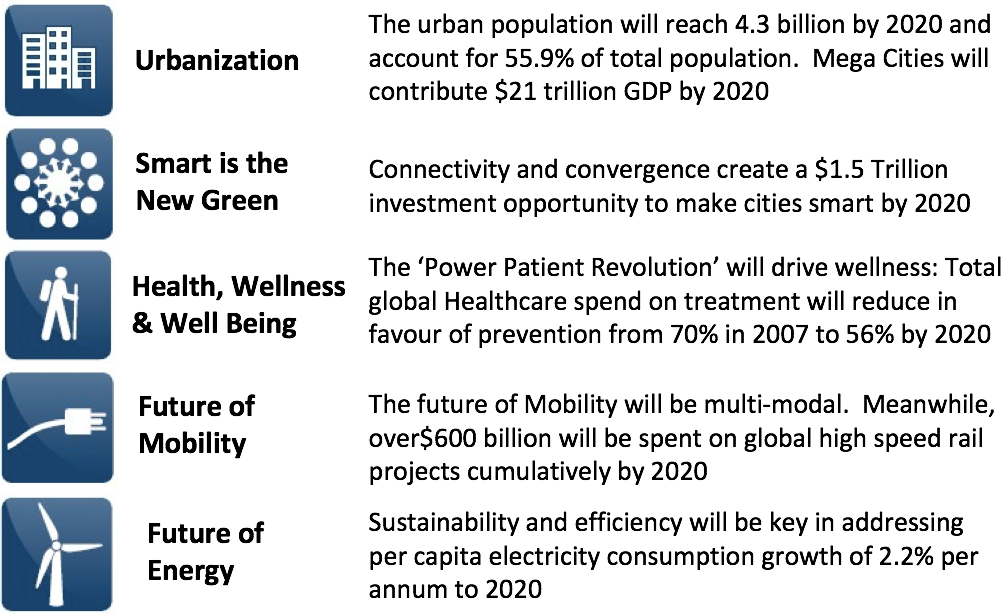Whitepaper shows that innovating to address society’s biggest global challenges will present a $2 trillion+ opportunity by 2020.
The global imperative to innovate and address the local challenges of the fast-moving modern world is what creates the concept of (and need for) Social Innovation. We believe it’s about bringing innovation to deliver life-changing outcomes for society and individuals. It’s about bringing together technological and human capabilities from various sectors, with technology convergence and IT as the glue that binds them together, in order to address society’s core challenges arising from the global mega trends shaping our future.
In our Social Innovation Whitepaper we define Social Innovation as the deployment of technology and new business models to bring about real positive change to the lives of individuals and societies, creating shared value.
There are 5 mega trends that rise to the surface in terms of social issues being faced by the world. These are: Urbanisation; Smart is the New Green; Future of Energy; Future of Mobility; and Health, Wellness & Wellbeing. To build a better future for society, we will need to see the convergence of business innovation with the enhancement and improvement of social infrastructure to address these global mega trends.

The key to success for all stakeholders (governments, corporations, communities and individuals) is understanding the need for collaboration and co-creation to build a better and more sustainable future. The convergence of OT with IT is creating huge opportunities for new technologies (IoT, IIoT, predictive analytics, artificial intelligence, augmented reality etc) as well as enabling new service based business models to deliver improved outcomes for customers, users and society as a whole.
Our conservative estimate of the quantitative impact presents a Social Innovation investment need of over $2 trillion in 2020 alone – a significant economic opportunity from even a conservative angle. And this is without even trying to quantify some of the enormous benefits such as the social, environmental, health and economic improvements that will be felt by society as a whole.
So where is the need – and hence the opportunity – most compelling? The simple answer is wherever society’s challenges are converging and can be best addressed through innovation. That means situations where:
"Social Innovation involves the convergence of technologies, industries, products and business models, including finance."
And perhaps most importantly, with convergence inevitably accelerating, we believe the future opportunities will be greatest for the companies that can bring together total solutions to address these multiple needs in a coherent, integrated manner.